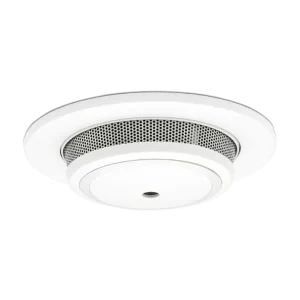
Cavius | 10-Year Photoelectric Smoke Alarm
Ionisation Smoke Alarms
This type of alarm works by using a small amount of radioactive material between two electrically charged plates. This material ionises the air, creating a current between the two plates, so when smoke, or other by-products of combustion enter the chamber, the current is disrupted causing the alarm to sound.
Ionisation smoke alarms are prone to false alarms, which results in people removing the batteries and thereby losing all protection. This type of alarm is also dramatically slower to respond to smouldering fires (the most common type of fire in a home environment) which can fill a home with deadly smoke long before it bursts into flames, and by responding slower it gives much less warning to occupants of the home and decreases the chances of survival. Ionisation alarms are also typically a-lot larger than photoelectric alarms.
So, what alarm is in my home?
If you aren’t sure what type of smoke alarm you currently have in your home, usually Ionisation alarms will have a yellow radioactive sticker (as per the image below) somewhere on the alarm body, it is commonly found underneath the alarm, so you might need to remove it to check.
Photoelectric smoke alarms are highly recommended by the New Zealand Fire Service, due to their effectiveness at detecting the range of fires that occur in a home.
All CAVIUS smoke alarms are photoelectric and come in an array of options, whether you are after an alarm with a 10 year long-life battery, an alarm that connects to the others in your home, or a hardwired mains powered smoke alarm, we have one to suit your needs! The CAVIUS smoke alarms are also aesthetically pleasing and not to mention small and stylish.
Your best protection in a house fire is to have a working smoke alarm, and the faster you can be alerted, the more time you have to get yourself and your family to safety. Make sure you are giving your family the best protection and have photoelectric smoke alarms installed in your home!